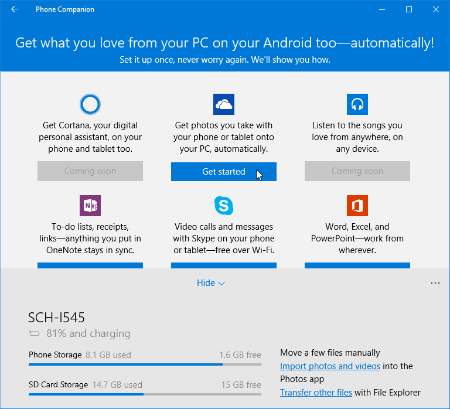

The rest of the options aren't terribly useful to a casual user. If you remember when you last opened the document, click the When was itmodified? button, and then choose the appropriate option.

(The search will beperformed on the C: drive by default.) Using the Look in dropdown box, you can instruct the Search Companion tosearch a floppy drive, CD, or alternate disk drive. (Obviously pictures, videos, and music filesdon't have words, but.) Next, enter a word or phrase you feel was unique with regard to thedocument you're searching for. If you can recall even part of the file name, enter it in the text boxprovided. You'll find a number of neat search parameters youhaven't seen before. On the opening screen of the Search Companion, click the All files andfolders link. What if you don't know the file name but can remember unique words orphrases used in the document? No sweat the Search Companion can help! In fact,these are the steps to follow for the toughest searches out there: To open thedocument, all you need to do is double-click it. If you know the name of the document or even part of it, type it in thetext box provided and then click the Search button.Īgain, the results of the search appear in the right pane. Click the appropriate option and then scroll down the SearchCompanion pane a bit. By default alldocuments will be considered, but if you remember a timeframe that could speedthings up a bunch. Next, to narrow the field of possibilities, the Search Companion asks youwhen you last modified the document you're looking for. To find such a document, simply launch Search Companion and follow thesesteps:Ĭlick the Documents (word processing, spreadsheet, etc.) link to uncoverthe next set of search options. The Search Companion is also highly effective at helping users locate wordprocessing documents, spreadsheets, or other types of Microsoft Officedocuments. Right-click the file you want to work with to take action on it (move it, delete it, rename it, and so on).įigure 3.6 When searching for images, you actually see the files, not just meaningless filenames. The Search Companion returns a list of possibilities in the right pane (see Figure 3.6). Type it in and then click the Search button. Init, you are asked to supply the name (or partial name) of the file you'retrying to find. Near the bottom of the Search Assistant, you'll see a text box. You are then asked to specify the exact type of multimedia fileyou're looking for: Pictures and Photos, Music, or Videos. The Search Companionpresents you with a new set of options.

To find a multimedia file on your machine, launch the SearchCompanion as described previously and then follow these steps:įirst, click the Pictures, music, or video link. Should you ever lose track of any of the files, however, the Search Companionis there to help.
#FILE STORAGE COMPANION WINDOWS WINDOWS#
Given the popularity of and ease in working with digital photos, music, andvideos in Windows XP, Home Edition, it's only natural to assume thatyou'll eventually end up with a large number of these files on yourmachine.
#FILE STORAGE COMPANION WINDOWS HOW TO#
The Search Companion window shown in Figure 3.5 opens.įigure 3.5 Your search begins by telling the Search Companion what kind of file you're looking for.Ĭonsult the sections below to learn how to find specific types of files. To begin working with the Search Companion, click the Start button and then click Search. A cute little animated dog guides you through theentire search, asking you relevant questions to help him retrieve the desiredfile as quickly as possible. Searching for a file on your computer has never been easier thanks to theWindows Search Companion. Learn More Buy Using the Search Companion to Find Files on Your Computer Sams Teach Yourself Computer Basics in 24 Hours, 3rd Edition


 0 kommentar(er)
0 kommentar(er)
